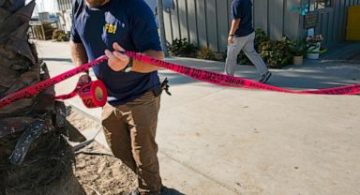Representatives for a social justice center that trained the Rev. Martin Luther King Jr. and other civil rights leaders said Tuesday that a white-power symbol was spray-painted near the site of a fire that destroyed a building there.
The fire at the Highlander Research and Education Center in New Market, Tennessee, happened early Friday morning, incinerating decades of archives in the center’s main office. Highlander leaders found the symbol Friday but did not make the news public until Tuesday, when they posted a news release on the center’s Facebook page.
Chelsea Fuller, acting spokeswoman for Highlander, said in an email that the symbol “looks like a tic-tac-toe board” and was painted in the parking lot near the office.
“It’s connected to a well-known white power movement, but they’re not releasing the name at this time,” Fuller wrote.
The Jefferson County Sheriff’s Office is investigating with assistance from the state Fire Marshal’s Office and the Tennessee Bureau of Investigation. The bureau referred questions to Sheriff Jeff Coffey, who did not return phone messages Tuesday.
A news release from the center noted that the fire destroyed “decades of historic documents, speeches, artifacts and memorabilia from movements of all kinds,” including the civil rights movement.
The office that was destroyed Friday was one of 10 buildings on the property, and Fuller said the library, which also contains historic materials, was undamaged.
Since 1932, Highlander has trained labor organizers and civil rights leaders including King and Rosa Parks. Over the years, it has been investigated by the House Committee on Un-American Activities, spied on by a segregationist Georgia governor and marched on by the Ku Klux Klan.
It was started as the Highlander Folk School in Monteagle, Tennessee, but a campaign to brand it as a “Communist training school” ultimately resulted in the center losing its charter, its building and its land in 1961.
It reopened under a new name in Knoxville, where it endured Klan marches, fire bombs and arrests, ultimately moving again to rural New Market in 1972.





